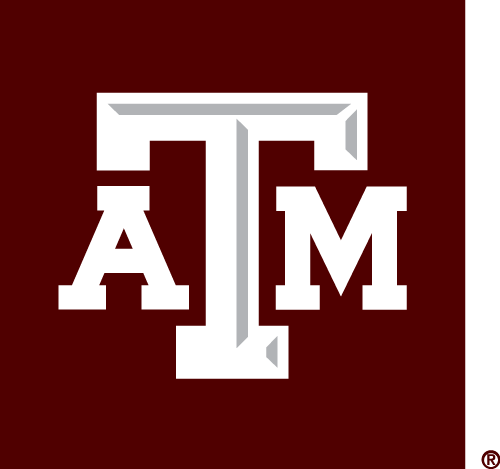
Biohazards in Research, Teaching or Testing
The Biosafety Program provides training and support to faculty, staff, and students regarding the regulatory requirements associated with research reviewed by Texas A&M University’s Institutional Biosafety Committee.
Do I need IBC Approval?
Determine your obligations based on agent, scope or activity.
General
The chart covers the biosafety approval requirements for various research activities involving microbial systems, cell systems, genetic material, and other materials.
Genetically Modified Animals and Plants
This chart outlines the biosafety approval requirements for various activities involving genetically modified (GM) rodents, animals, and plants, specifying the containment level (BL-1 or BL-2) and whether IBC approval is required for purchasing, transferring, breeding, and creating GM organisms.
Resources
This webpage provides biosafety guidelines for investigators, including rules on spills, waste disposal, safety cabinets, and recombinant DNA. It also includes safety guidance, training materials, and information on permits and regulations.
University Guidance
University Rule for Biohazards (15.99.06.M1) is one of several guidance documents researchers are expected to follow to ensure the safe and compliant use of biohazardous materials.
Biosafety Manual
The purpose of this manual is to provide information to faculty, staff, and students on how to work safely in the laboratory with biohazards and recombinant or synthetic nucleic acid molecules, and to maintain compliance with university rules. While this manual specifically addresses biological safety, it is important that personnel are aware that many other hazards (e.g., chemical hazards, radiation hazards, physical hazards, etc.) may be present in the laboratory as well.
This manual is periodically reviewed and updated as necessary.
The BMBL outlines biosafety best practices in biomedical and microbiological laboratories and is identified in the University Rule for Biohazards (15.99.06.M1) as one of several guidance documents researchers are expected to follow to ensure the safe and compliant use of biohazardous materials. All researchers involved in research, teaching, or testing activities involving biohazards should be familiar with the contents of this manual.
The purpose of the NIH Guidelines is to specify the biosafety practices and containment principles for constructing and handling: (i) recombinant nucleic acid molecules, (ii) synthetic nucleic acid molecules, including those that are chemically or otherwise modified but can base pair with naturally occurring nucleic acid molecules, and (iii) cells, organisms, and viruses containing such molecules.
For nearly 50 years, APHIS has been protecting the health and value of America’s agricultural and natural resources. It’s a vital mission: Healthy and profitable American agriculture provides food and clothing for countless people worldwide and is a key pillar of our economy.
The Federal Select Agent Program comprises the Centers for Disease Control and Prevention/Division of Regulatory Science and Compliance and the Animal and Plant Health Inspection Service/Division of Agricultural Select Agents and Toxins. The Federal Select Agent Program oversees the possession, use and transfer of select agents and toxins, which pose a threat to public, animal or plant health.
Laboratories and Facilities
Biosafety personnel conduct site visits on behalf of the IBC to assess labs based on IBC policies, federal requirements, permits, and biosafety best practices. A report will be provided to the PI, and any deficiencies must be resolved before IBC approval. Site visits occur during the initial approval and annually, or as risk assessment indicates, thereafter.
The initial step for approval to work with biohazards is completing the IBC permit application through iRIS. Once an IBC permit application has been submitted, it is assigned to biosafety staff for review and processing. Part of this process includes a laboratory site visit and assessment.
When moving or leaving a laboratory, you must remove or transfer all biohazardous materials, including biological agents and recombinant DNA, decontaminate all equipment, and clear the space to ensure safety and compliance with biosafety regulations.
Biosafety Training
Training is assigned in conjunction with the IBC submission review. Most trainings are available through TrainTraq. Contact ibc@tamu.edu for instructions and the password to access trainings through the gateway external link.
Additional Training Information
Biosafety Level 3 Training
Before you can work in a BSL-3 lab you must complete BSL-3 training provided by Office of Biosafety staff. Instructor led BSL-3 training is available upon request, as needed. Email the Office of Biosafety or call (979) 862-4549 for assistance. BSL-3 training must be renewed annually.
Documentation of lab-specific training
The principal investigator is responsible for providing lab-specific training to all personnel working in biosafety laboratories including students and visitors. Provision of lab-specific training by the PI, or their designee, must be documented for the IBC. Contact the IBC for more information or with any questions.

BOHP provides occupational health services to personnel at risk of exposure to infectious biohazards (in BSL-2 and BSL-3 labs) or to animals in the course of their participation in research, teaching or diagnostic activities permitted by IBC or IACUC.
Zoom Office Hours
Need help with IBC submissions? Schedule a help session.
Zoom office hours are now available: Tuesdays, 10 a.m.-11 a.m., and Thursdays, 4 p.m.-5 p.m.
